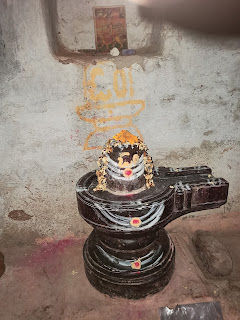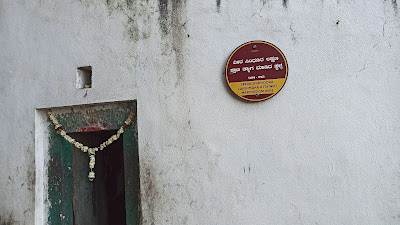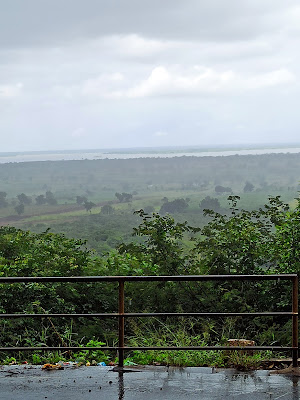Monday, November 28, 2022
Madhvaraj Umarji
Saturday, November 26, 2022
Diwakar Ranganath Ramchandra
Friday, November 25, 2022
Basappa Bagali
Monday, November 21, 2022
Kanthi Hanumantharaya
- How to continue in the profession of Rangabhoomi-published in Smarana Sanchike, Ranga Basinga
- Equality between professional Rangabhoomi and amateur Rangabhoomi - published in Smarana Sanchike, Kallusakkari.
- Stage tradition of Bagalkot district- published in Chalukya Siri
- Present problems of Rangabhoomi-published in Smarana Sanchike, Krishna Prabhe
- Rangabhoomi and Bilagi Taluka- published in Samarasya
- Evolution in drama theatre profession- An article presented in state level gathering of artists held in Ilkal.
- About theatres- published in Vrittiranga Bhoomiya Vartamanada Savaalugalu
- Bagalkot Jilla Darshan – Chief Editor of the book.
Friday, November 18, 2022
Krishnamoorthy Puranik
On September 5, 1911, in Bilagi, Krishnamoorthy Puranik was born to Tammanna Shastree and Lakshmi Bai. This was a traditional poor Brahmin family interested in the traditional songs sung in the temples.
When he was 14 years old, he met an 18-year-old widow during his high school years who had lost her husband just a year before. She was so limited to staying exclusively in rooms with low lighting. She had never been in contact with anyone else and had never seen the sun. This caused him to reflect and reform society's social norms. Such circumstances eventually became a major theme in his book, poetry, etc.
Wednesday, November 16, 2022
Kandagal Hanamantaraya
Monday, November 14, 2022
Goharbai Karnataki or Miss Gohar of Bijapur
Saturday, November 12, 2022
Dr. M C Modi
Dr. Modi was an Ayurvedic Eye surgeon who performed a record half-a-million (more than five-lakh) eye surgeries. He travelled to remote villages and towns of India to hold mass eye camps. He was known for his dexterity as a surgeon and diagnostic acumen. He Studied DAM from Kankanwadi Ayurvedic College Belagavi, Karnataka.
An Indian ophthalmologist, born in Bilagi of Bagalkot district. He is an alumnus of KLE U's Shri B M Kankanawadi Ayurved Mahavidyalaya Belgaum.
Padma Shri in 1956
Padma Bhushan in 1968
Knight of the Blind
award
Doctarate by Mysore University, Karnataka University and Puna University
Watumull Award Humanitarian Award in 1989.
Thursday, November 10, 2022
Sanaadi Appanna
In the year 1876, Subbanna Bhajantri gave birth to Appanna in Bilagi as his second son.
A group of people who used to play music at important events including weddings and sacred festivals are known as a bhajantrigaru. Shehanayi or Sanadi is one of the several tools utilized in this process. Still there are lot of people around Bilgi take this as profession and play shehanayi in weddings and festivals. In Bilgi there are Appanna's dynasty who played the shehanayi at international levels also.
His father provided this work of art and his brother Babanna helped Appanna to sustain it. Appanna became well-known and adapted both the Hindustani Sangeeta and the Karnataka Sangeeta via his earnest devotion to this art.
Appanna gained the hearts of countless people because of his devotion, humility, and sincerity. He was welcomed to every programme and became very famous.
Even though he passed away on September 6, 1945, he is still present in the world today thanks to the film: Sanadi Appanna..
Sanaadi Appanna is a 1977 Indian Kannada-language musical film directed by Vijay based on the novel Kuniyitu Hejje Naliyithu Gejje by Krishnamoorthy Puranik which was based of Sanaadi appannas life story. Krishnamoorthy Puranik is also an eminent of Bilgi wrote Sanadi appanna's story as a novel.
In this film Dr Rajkumar played the role of Sanaadi appanna. It is notable for the fact that Bismillah Khan played the actual shehnai for Rajkumar's character in this movie.
We are proud to say Sanaadi Appanna is from the holy land of Bilgi.
Tuesday, November 8, 2022
Yelu Math
From Sri Siddeshwar temple of Bilgi, When
we climb the hillock towards north, there is a police wireless station, Maal Gamba, tomb of Baba saab and at a distance towards south-west, there is Yelu Math or Elu math. Very nice place for meditation. We need to trek for around 4-5 kilometers to reach this place... You can see the way how it looks:
There are two ways to reach this place. One was mentioned above from Shree Siddeshwar temple. And the other one is from behind Shree Siddeshwar school enroute to Nagaral thanda or Koppar padevva temple. By any means we have to trek around 5-6 kms inside the hill.
When you go inside the temple you see seven doors hence the name Yelu Math. In kannada Seven means Yelu- Elu. This temple is of three floors. When you enter, its actually the middle floor. There is a small square which will take you to the ground floor. You need to enter and go down there to see Shivalingam.. Thats the actual place to visit and meditate.
Amirbai Karnataki


- "O' Jaanay Waalay Balamwa Laut Kay Aa Laut Kay Aa" Sung by Amirbai Karnataki and Shyam Kumar, lyrics by D. N. Madhok and music by Naushad Ali in the film Rattan (1944)[4]
- "Dheere Dheere Aa Re, Baadal", from the film Kismat (1943)
- "Priya madhuvanadali", a Kannada song, sung by Amirbai, which is so popular all over Karnataka even today
Monday, November 7, 2022
Koppar Padevva Temple





































.jpg)


.jpg)


.jpg)


.jpg)
